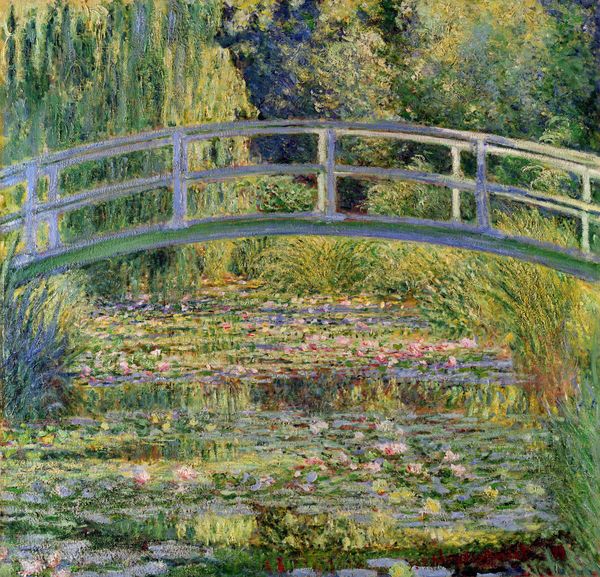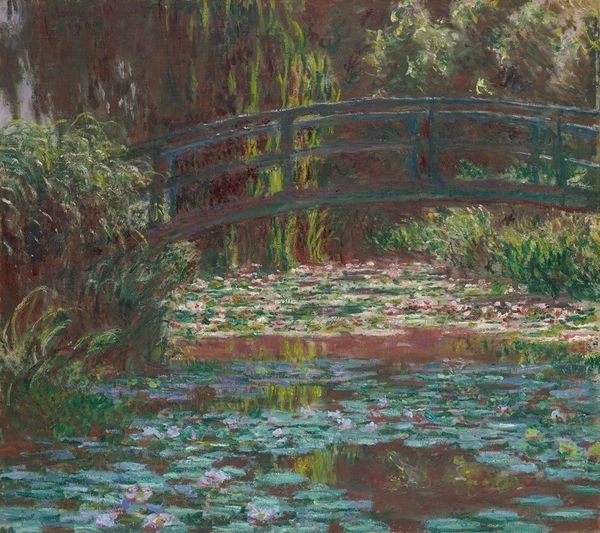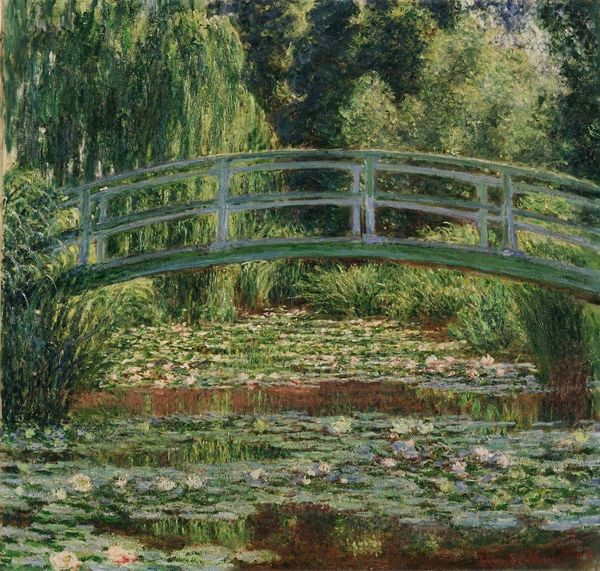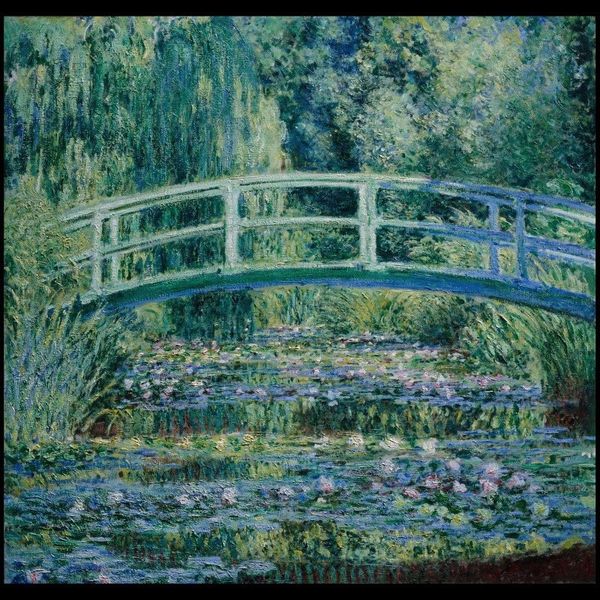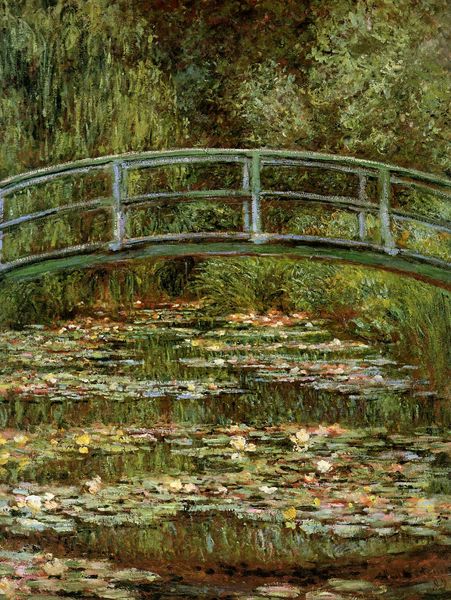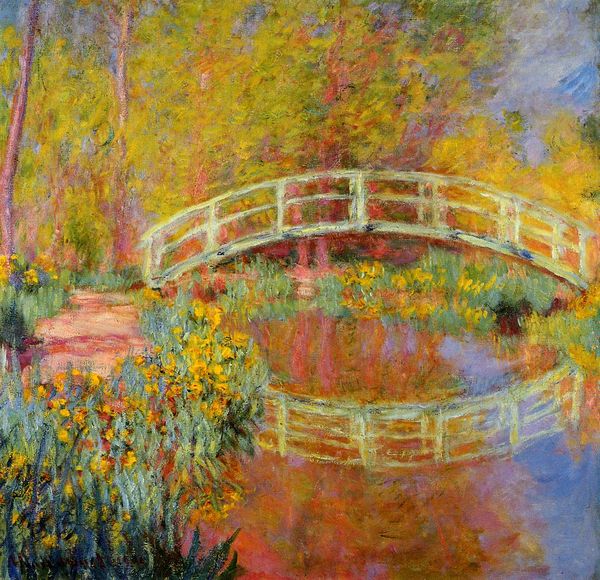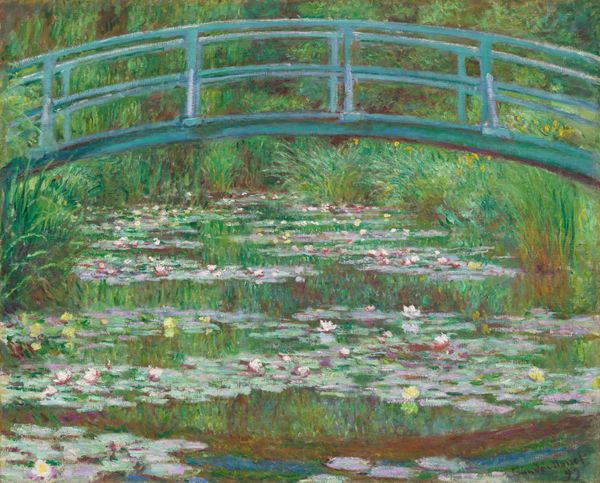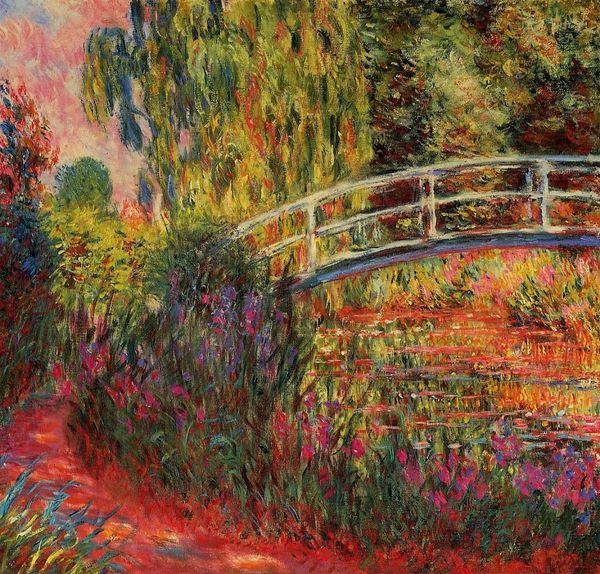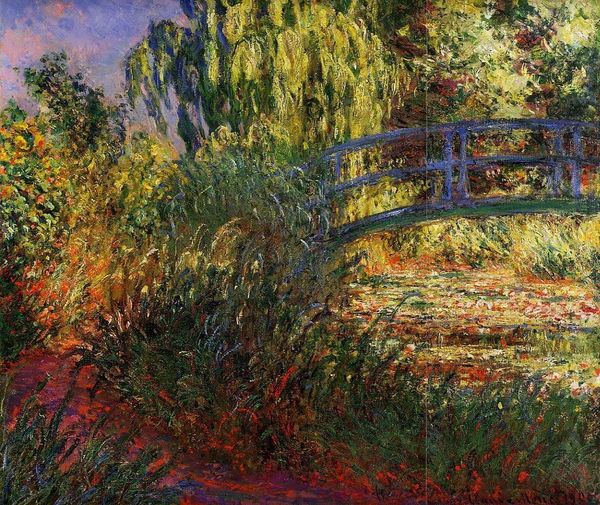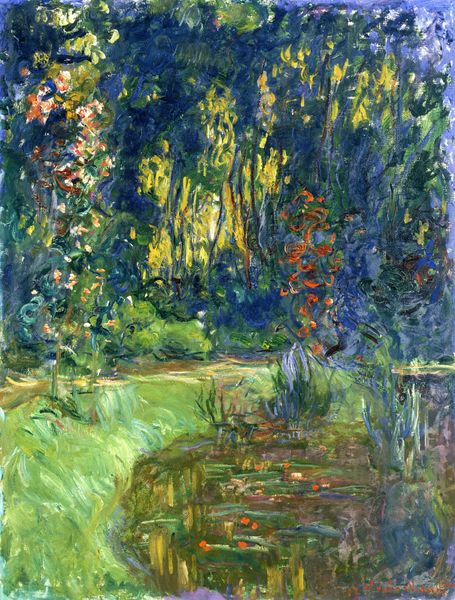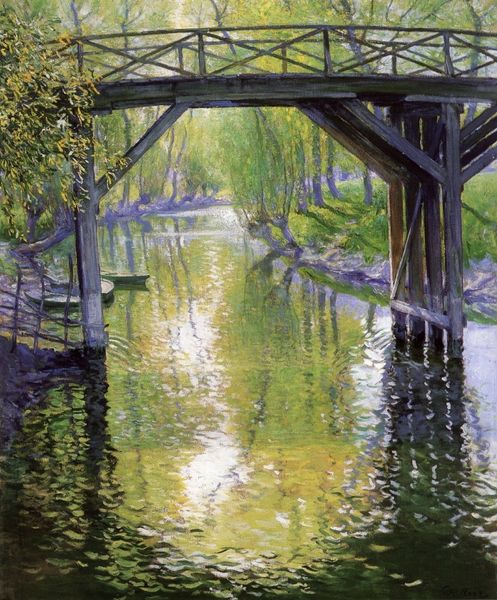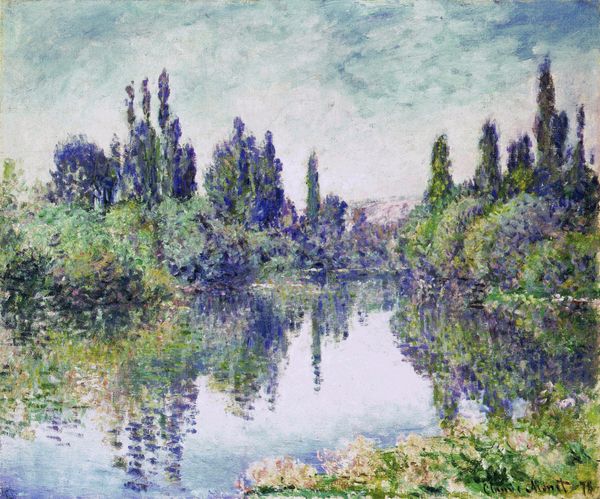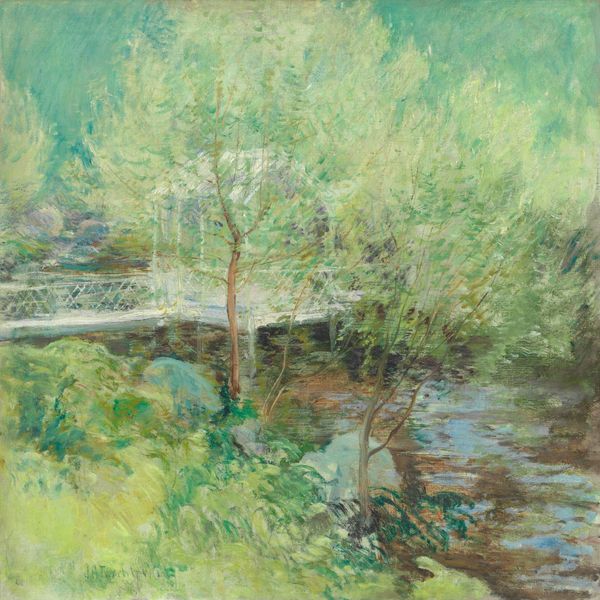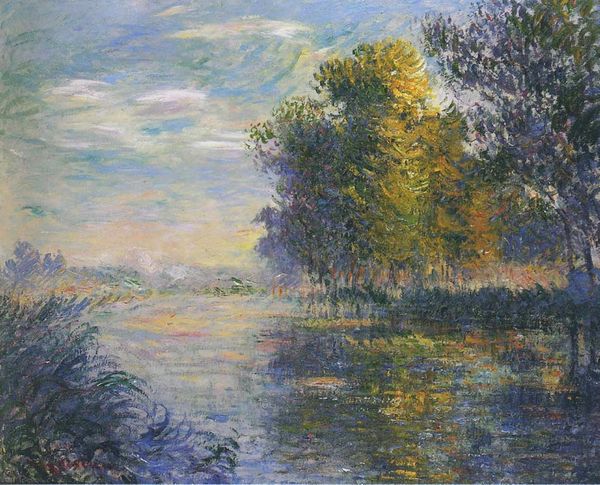
Copyright: Public domain
Claude Monet’s “The Japanese Bridge,” made with oil paint on canvas, immerses us in the artist's garden at Giverny. Monet built his famous garden and pond by employing laborers to physically divert a river, constructing the scene of his paintings with significant intervention. The texture of the paint itself, applied in short, visible strokes, suggests a kind of labor. The layered dabs of pigment mimic the density of the scene: the profusion of water lilies, the bridge, and the surrounding foliage. Each touch of the brush is a decision, a movement of the hand, contributing to the overall impression of light and atmosphere. Monet's repetitive application of paint mirrors the repetitive labor of industrial processes and the burgeoning consumerism of the late 19th century, transforming manual work into a commodity for the eye. By considering Monet's process, the material qualities of his paint, and the social context of his work, we gain a richer understanding of "The Japanese Bridge" as more than just a pretty picture, but a document of its time.
Comments
No comments
Be the first to comment and join the conversation on the ultimate creative platform.
